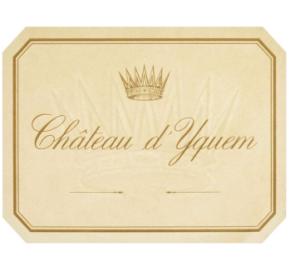
Chateau d'Yquem 2003
- Producer Chateau d'Yquem
-
Blend
100% Semillon-Sauvignon Blanc Blend
100% White Bordeaux Blend - Country France
- Region Bordeaux
- Appellation Sauternes
- UPC 0 15643 49039 2
Tasting Notes
Vintage 2003
Harvest
We had to wait until September 5th to 10th to have the light rainfall vital to trigger proper Botrytis.
The 35 mm of precipitation had an amazing impact. After a very warm night on September 11th to 12th, almost all the grapes had changed color, from golden to pink, indicating that Botrytis Cinerea had spread throughout the vineyard.
Then the weather bureau announced another strong, stable anticyclone, bringing high temperatures and easterly winds, so it became clear that the vintage would start immediately and be over in a very short time.
Sour rot caused some concern in a few parts of the vineyard, so, starting on September 17th, we focused on picking exclusively on healthy plots without any fruit flies.
By focusing all our human resources on just part of the estate, we were able to keep up with the rapidly botrytizing grapes (temperatures were over 30 Celsius every day!) and ensure that the sugar levels in the must did not exceed the balance we aim for at Yquem (20 - 21 degree potential alcohol).
A stormy day on September 22nd interrupted the harvest and gave pickers a chance to rest. Only 6 millimeters of rain fell, however, and work resumed even more frenetically the next day.
At that point, we started finding grapes that had suffered in the summer heat wave and burst after the rain September 7th and 8th, releasing sweet juice that had attracted insects and suffered from sour rot.
We became highly selective about the grapes we picked and many bunches were simply cut and left on the ground.
As expected, sugar levels rose very rapidly and by September 25th we had reached the highest concentration that could ferment proerly and produce a well-balanced Sauternes.
We went through the last plots of Sauvignon Blanc on the 26th, noting that this variety had botrytized nicely this year, with no unwanted rot. The highly concentrated must from these grapes is likely to add appreciable complexity to the final blend.
The remaining grapes, accounting for about 20% of the estate, were no longer considered sufficiently healthy or suitable for making Yquem, so they were completely eliminated.
The harvest ended on September 26th, after only 9 days' picking and 2003 beat the previous record for early completion, on October 4th 1934.
Weather Conditions
After flowering (mid May), the vegetation was 2-3 weeks ahead of normal, indicating that it would be an early vintage.
These conditions, however, were much less unusual than the extreme temperatures experienced in August 2003. The mean maximum temperature for the month was 32.5 Celsius while the normal value is 26.4 Celsius. The previous record was held by 1933 (31 Celsius), followed closely by 1906, 1947, and 1949 (30 Celsius). Rainfall figures, however, for the period from October 2002 to October 2003 were absolutely normal and the vines never suffered from lack of water.
Nevertheless, the excessive August heat (3 days with over 40 Celsius in 2003 out of a total of 6 since 1896) had a certain impact on the grapes.
Besides a few scorched leaves and grapes, ripening was unsurprisingly well ahead of schedule. On August 8th, some Sauvignon Blanc already had 13.5 degree potential alcohol with good acidity, some 3 to 4 weeks before the usual date!
